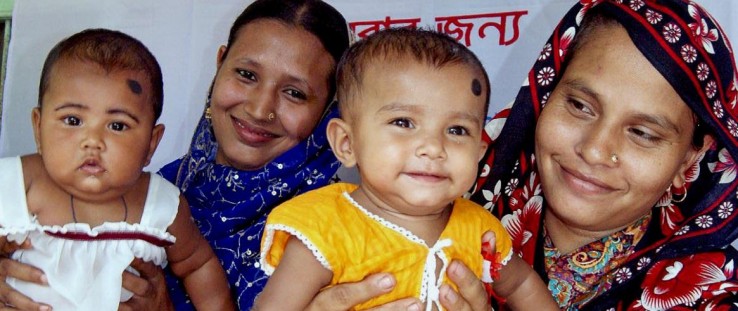

For many couples that plan to start a family, the journey from pregnancy to birth is one of excitement, anticipation, and in many cases, fear. The first two emotions are universally shared, but the third varies greatly with geography and circumstance.
A couple in the United States may fear that nine months isn’t enough time to read all of the right parenting books, buy a new car, and find a bigger house. The convenience of a well-equipped health-care system allows the couple to be preoccupied with preparing for the arrival of a new family member, and focus on becoming good parents.
A couple in the developing world often experiences a very different journey. Eighty to 90 percent do not have access to health facilities. This means that an expectant mother may not receive any pre-natal care during pregnancy and will most likely give birth without trained medical personnel.
A Short, Deadly Window
Each year, more than 150,000 women die in the first 48 hours after birth throughout the world; 1.6 million newborns will die in that same time frame. Ninety-nine percent of these pregnancy-related deaths occur in the developing world. The sad reality is that during this short window, mothers die giving life and newborns are robbed of their future simply because they don’t have access to a system that affords them quality care.
Changing the tide on these staggering statistics has been one of the greatest challenges for the global health community; the problem is complex and for this particular public health issue, there is no magic bullet. The solution requires bringing health-care services directly to people in remote communities, and educating those 80-90 percent of people who are accustomed to traditional practices, and explaining the benefit of seeking care and prescribing to healthy practices.
Studies show that progress in this area is slow. The rate of maternal and newborn deaths decreases by less than 1 percent each year, respectively.
But in one country—Bangladesh—maternal deaths decreased by 40 percent in the last nine years.
The 40 Percent Miracle
The Bangladesh Maternal Mortality and Health Service Survey, jointly funded by USAID, the Government of Bangladesh, Australian Aid, and the United Nations Population Fund, recently revealed that maternal deaths in Bangladesh fell from 322 per 100,000 in 2001 to 194 per 100,000 in 2010.
“This is a tremendous achievement for a country like Bangladesh where 80 percent of the population live under $2 per day income,” says Dr. Umme Meena, maternal health specialist at USAID/Bangladesh. With numbers like that, Bangladesh is on track to meet the 2015 deadline for the United Nations’ fifth Millennium Development Goal: to reduce the maternal mortality rate by three-fourths.
While further studies are needed to accurately determine the cause of this sharp decline, many global health experts believe it is a consequence of more couples actively seeking care combined with improved access to higher-level referral care. The improved access results from women’s increased awareness and literacy levels, better roads, and an increased number of health facilities that are able to provide emergency obstetric care.
With support from USAID, an increasing proportion of women receive antenatal care. Accordingly, more women understand how to access the health-care system, and are more aware that they must seek prompt medical care when they detect any complications during their pregnancy or delivery.
Over the past five years, USAID has invested in programs that actively manage the third stage of labor, the most dangerous stage, to prevent the highest cause of maternal death—postpartum hemorrhage. Experts also give credit to successful family planning programs that have reduced exposure to high-risk pregnancies, which in turn prevented a large number of maternal deaths. The fertility decline from 3.2 to 2.5 births per woman in the last nine years is estimated to account for 46 percent of the decline in maternal deaths during this period.
Better Planning, Better Outcomes
USAID’s family planning programs in Bangladesh contributed significantly to this behavior change. USAID supports the world’s largest social marketing program—a widespread network of 200,000 pharmacies, other retail outlets, and health providers to market contraceptive and health products and provide quality health services—which accounts for 35 percent of Bangladesh’s modern contraceptive prevalence rate.
“We can confidently say that our long and unwavering investments in family planning have had a direct impact in lowering the total fertility rate, and thus the maternal mortality rate, in Bangladesh,” says Lily Kak, USAID’s senior country adviser for Bangladesh.
Amanda Glassman, director of global health policy and a research fellow at the Center for Global Development, wrote that “the results are also a good reminder that investments in family planning and girls’ education drive much of maternal health outcomes, and that USAID investment in social marketing of family planning and health seems to be paying off in improved health.”
Care for 20 Million
Through NGO clinics and community-based approaches, USAID provides basic health-care coverage to nearly 20 million Bengalis, including low-cost, quality family planning services, maternal and child care, and HIV/AIDS and tuberculosis prevention and treatment. USAID has trained and mobilized community health workers who go into communities without health facilities to provide maternal and child health care. The care also supplements broader health services that are provided in USAID-supported NGO clinics and satellite clinics in communities, thus contributing to significant declines in child mortality. And, through the social marketing program, USAID provides family planning services to the entire nation.
But the international aid community is not the sole driver of these changes. When addressing the U.N. General Assembly in 2010, Prime Minister Sheikh Hasina Wazed committed to doubling, by 2015, the percentage of births attended by skilled health workers from the current level of 24 percent; staffing all 427 sub-district health centers to provide around-the-clock midwifery services; and upgrading all district hospitals and Mother and Child Welfare Centers for emergency obstetric care services. She also committed to ensuring universal implementation of the Integrated Management of Childhood Illness Program. As a first step towards achieving her commitment to halve unmet need for family planning by 2015, the prime minister mobilized 17 ministries in a meeting of the National Population Council in September 2010.
Last November, the Bangladesh Government and the United States jointly rolled out President Barack Obama’s Global Health Initiative (GHI) country plan—a multi-year, interagency effort aimed at improving and saving lives by strengthening health systems.
An independent review of the national health sector program concluded that “Bangladesh has already achieved most of the reduction in mortality that can be achieved through vertical programs; future progress will increasingly depend on more complex interventions requiring a more efficient, effective and equitable health system.”
The GHI offers an opportunity for the U. S. Government to make a strategic shift towards increased engagement with the Government of Bangladesh and strengthened capacity of the public sector health systems while building on the successful approach of supporting service delivery through the NGO and private sector. It will continue to focus on providing quality services to further reduce maternal and child mortality, increase family planning use, improve nutrition status among children under age 5, and strengthen overall health systems over the next five years.







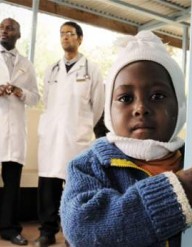

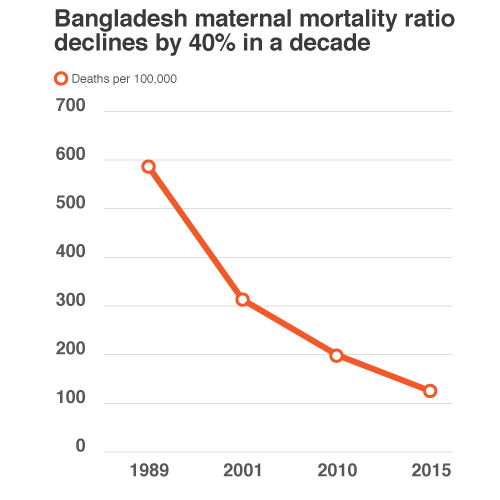
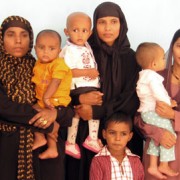

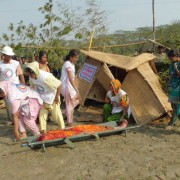
Comment
Make a general inquiry or suggest an improvement.